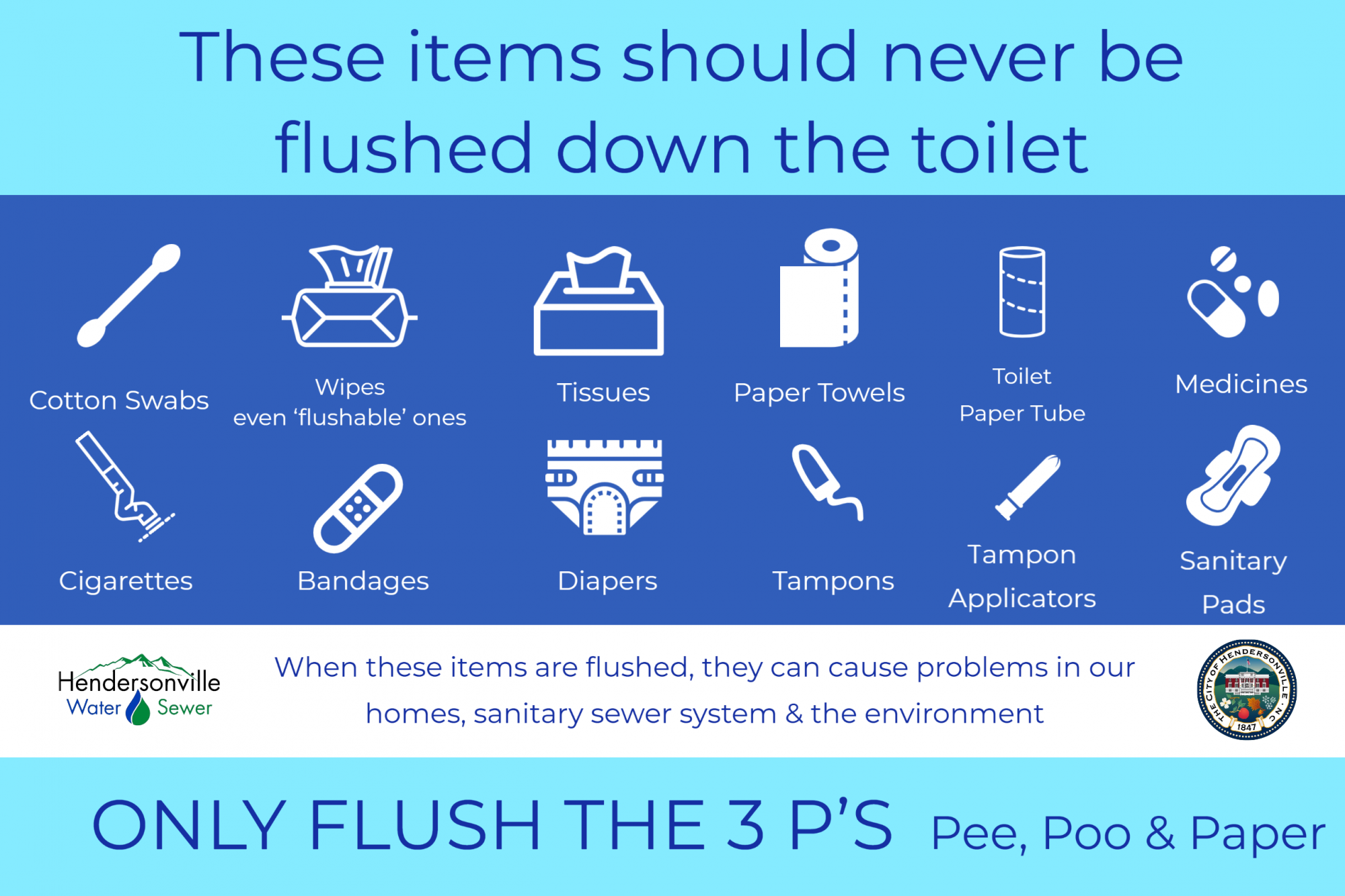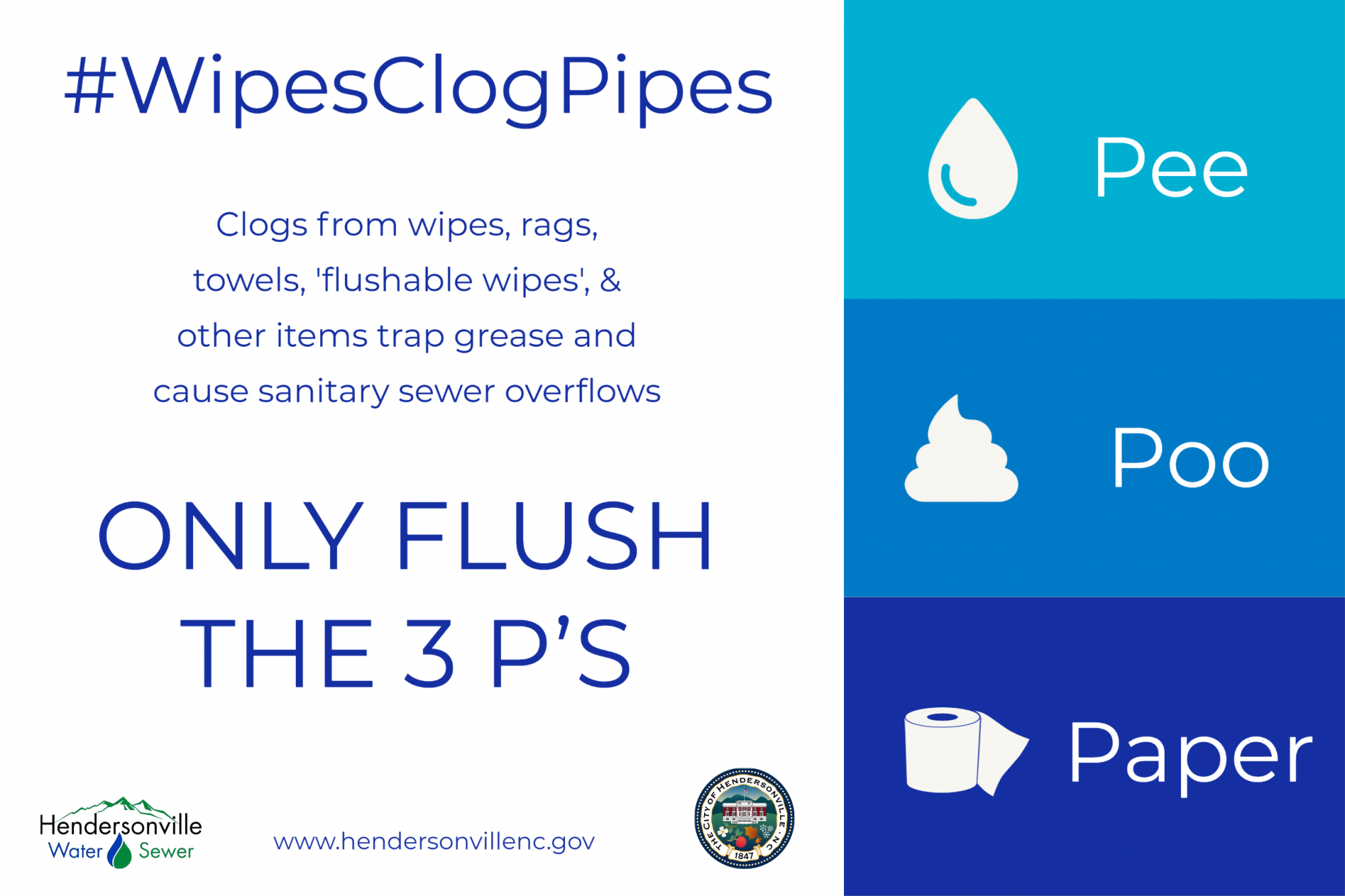Sanitary Sewer Overflows
The Hendersonville City Council unanimously adopted a Resolution to Reduce Sanitary Sewer Overflows (SSOs) at its April 2020 meeting. SSOs are the release of untreated or partially treated wastewater from a sewer system, which contribute to the pollution of streams and rivers. SSOs occur from time to time in all sewer collection systems. However, frequent and repetitive SSOs have occurred in portions of the City’s sewer system. SSOs can have many different causes including: pipe blockages, pipe breaks, inadequate treatment and/or pipe capacity, power failures, excessive infiltration and inflow, and severe natural conditions.
Resolution to Reduce Sanitary Sewer Overflows
The resolution illustrates the City’s strong commitment to reducing SSOs from its sanitary sewer system and outlines a plan of action to achieve this goal. The action plan, comprised of six items/projects planned over the next two years, is summarized below:
1. Infiltration and Inflow (I/I) Reduction Task Force
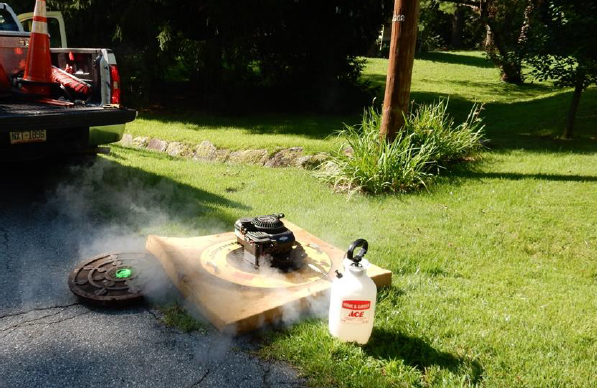 The I/I reduction task force is comprised of City staff who meet on a weekly basis to plan and implement I/I reduction activities. I/I is groundwater and stormwater that enters a sewer collection system. Virtually every sewer system has some infiltration and/or inflow and generally, small amounts of I/I are expected and tolerated. However, I/I may be considered excessive when it is causes capacity issues and SSOs. I/I reduction activities include: closed circuit television (CCTV) inspection of sewer pipes, installation and monitoring of portable flow tracking devices, and smoke testing.
The I/I reduction task force is comprised of City staff who meet on a weekly basis to plan and implement I/I reduction activities. I/I is groundwater and stormwater that enters a sewer collection system. Virtually every sewer system has some infiltration and/or inflow and generally, small amounts of I/I are expected and tolerated. However, I/I may be considered excessive when it is causes capacity issues and SSOs. I/I reduction activities include: closed circuit television (CCTV) inspection of sewer pipes, installation and monitoring of portable flow tracking devices, and smoke testing.
Smoke testing identifies storm drain connections and/or other defects that contribute to I/I by forcing smoke into sewer pipes. Smoke escapes out of the sewer pipes at connections with storm drains or cracks in the pipe and is visible to inspection crews. Once found, these defects are repaired. Often times these defects are identified on private property and it is the property ownerâs responsibility to complete the associated repair work.
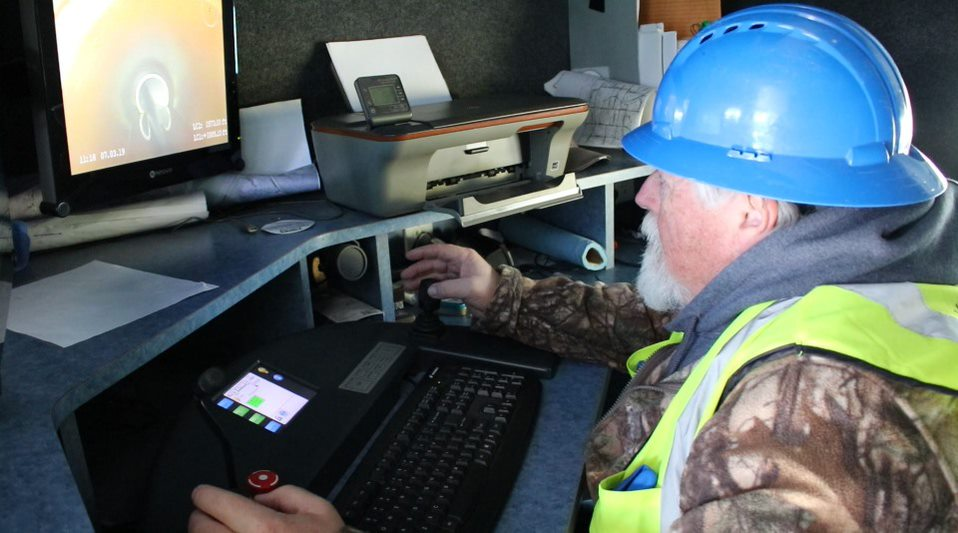
City staff perform CCTV inspection of underground sewer pipes
![]()
City staff install portable sewer flow tracking device
2. Sewer Basin 5 Micromonitoring Study
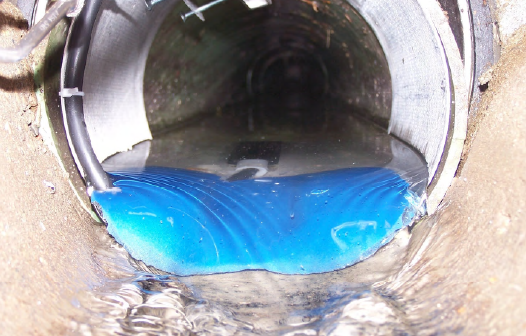 The City’s sewer collection system master plan, a tool that provides a roadmap for how the City aims to maintain, improve, and expand important infrastructure, identified sewer basin 5 having the highest I/I rate, which made the basin an ideal candidate for a future study. A Micromonitoring study was performed during the summer of 2019. Micromonitoring is a focused program to measure sewer flow in the upstream reaches of a basin where the flows are typically much lower and the pipes are much smaller as compared to regional flow monitoring. Sewer basin 5 was divided into smaller sub-basins where flow data was measured using micromonitors. Wet weather flow data was evaluated to determine whether significant I/I defects may be present in the sub-basins based on the flow response to a rain event. About 33% of the sewer pipes in basin 5 were found to have high I/I based on the study. These sub-basins with a high potential for I/I defects were recommended for inspection (wet weather CCTV and smoke testing) activities and/or more precise flow monitoring, which City staff are diligently working to complete by June 30, 2020.
The City’s sewer collection system master plan, a tool that provides a roadmap for how the City aims to maintain, improve, and expand important infrastructure, identified sewer basin 5 having the highest I/I rate, which made the basin an ideal candidate for a future study. A Micromonitoring study was performed during the summer of 2019. Micromonitoring is a focused program to measure sewer flow in the upstream reaches of a basin where the flows are typically much lower and the pipes are much smaller as compared to regional flow monitoring. Sewer basin 5 was divided into smaller sub-basins where flow data was measured using micromonitors. Wet weather flow data was evaluated to determine whether significant I/I defects may be present in the sub-basins based on the flow response to a rain event. About 33% of the sewer pipes in basin 5 were found to have high I/I based on the study. These sub-basins with a high potential for I/I defects were recommended for inspection (wet weather CCTV and smoke testing) activities and/or more precise flow monitoring, which City staff are diligently working to complete by June 30, 2020.
3. Sewer Basin 6 Micromonitoring Study
The City’s sewer collection system master plan identified sewer basin 6 having the second highest I/I rate, behind basin 5. The City plans to conduct a micromonitoring study, similar to the basin 5 study, within basin 6 by December 31, 2020.
4. Wastewater Treatment Facility Master Plan
The primary goal of the master plan will be to identify improvements and expansions to the City's treatment facility over a 20-year planning period (2040) to ensure that the facility is reliably maintained and expanded to meet projected growth demands in conjunction with the recently completed sanitary sewer collection system master plan. The plan includes but is not limited to: treatment process evaluation, equalization basin preliminary engineering evaluation, and capital improvement project prioritization/recommendation.
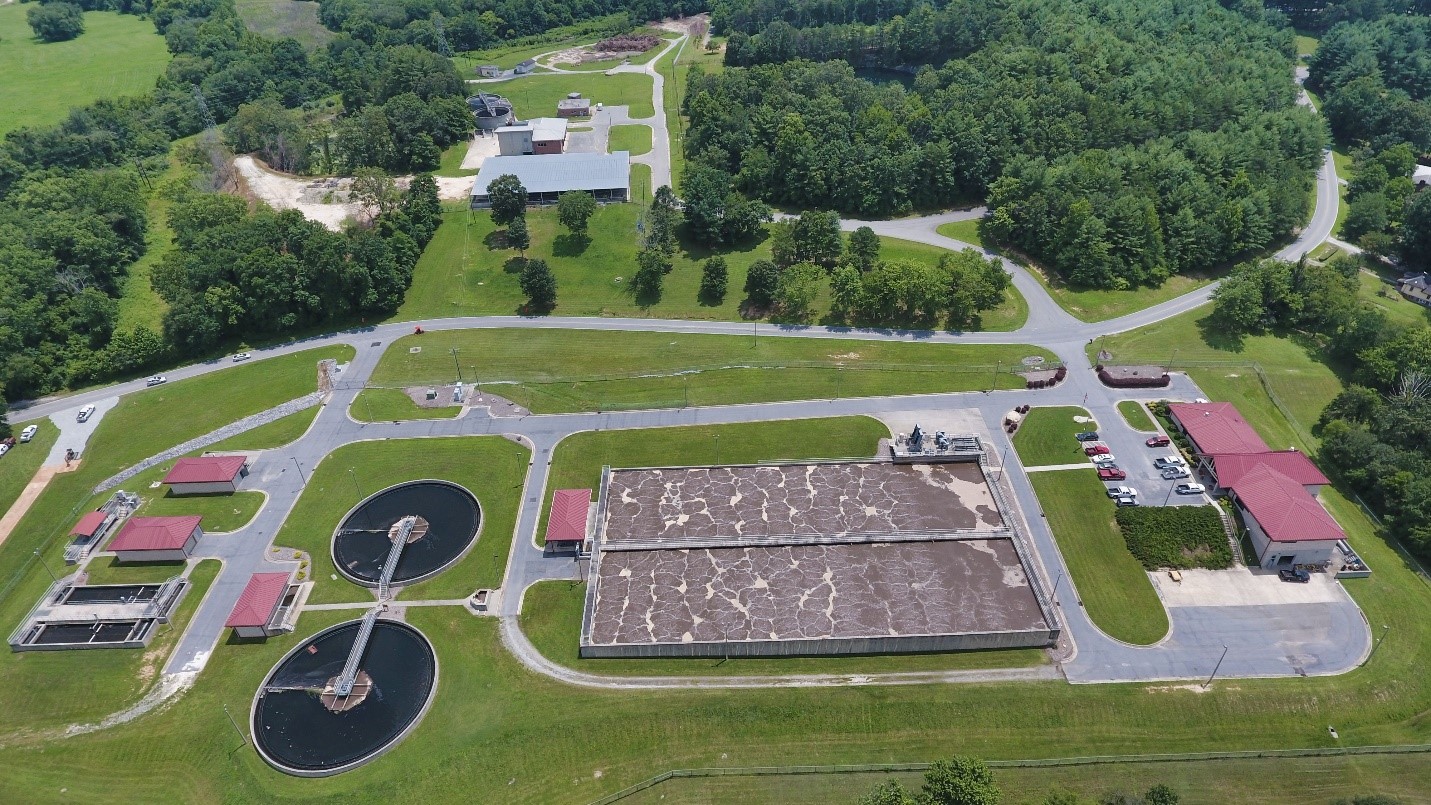
City of Hendersonville Wastewater Treatment Facility
5. Clear Creek Sewer Interceptor Replacement Project
The Clear Creek Interceptor Replacement Project will replace approximately 3,000 linear feet of existing 18-inch sewer pipe with 30-inch sewer pipe along Clear Creek. This project was identified in the City’s sewer collection system master plan as being under-sized and has been the cause of several recent SSOs. The project is under construction in 2021.
6. Mud Creek Sewer Interceptor Replacement Project
The Mud Creek Interceptor Replacement Project will replace approximately 10,000 linear feet of existing 24-inch and 12-inch diameter aging sewer pipes with 36-inch and 24-inch sewer pipes along Mud Creek. This project was identified in the City’s sewer collection system master plan as being under-sized and has been the cause of many recent SSOs. The City plans to begin construction of this project by December 31, 2021.
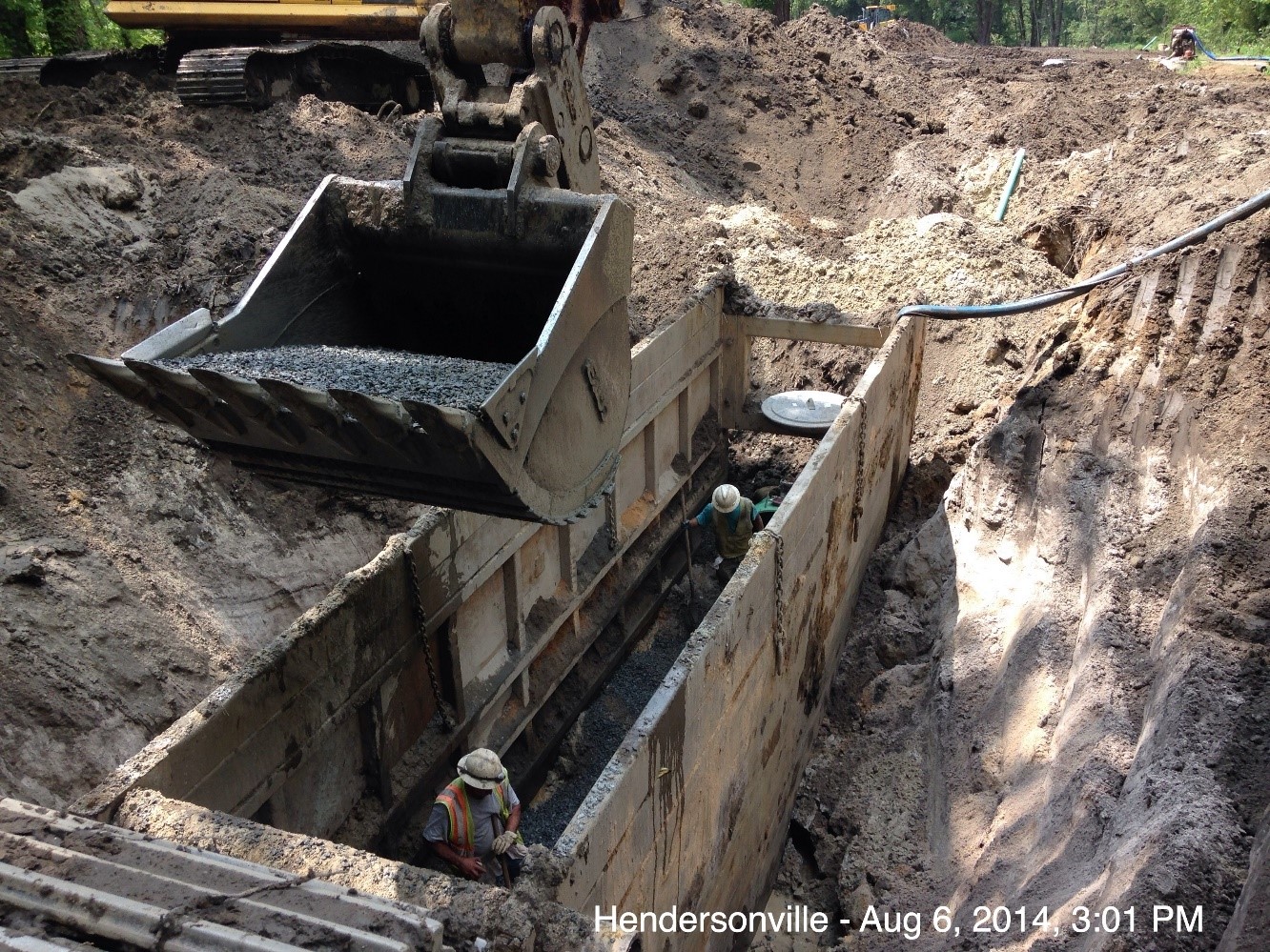 Installation of gravity sewer pipe
Installation of gravity sewer pipe
